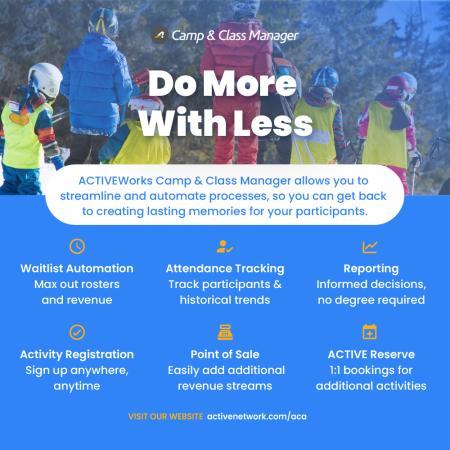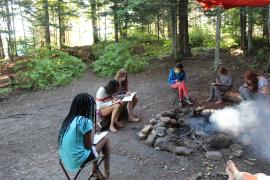Campers’ safety and well-being should be summer camps’ top priority. In order to create a secure environment, it is essential to focus on managing risk specifically related to the detection and prevention of sexual abuse. Highlighted here are the potential risks of sexual abuse and strategies to effectively mitigate those risks.
According to the Centers for Disease Control and Prevention
(CDC, 2022):
Child sexual abuse is a significant public health problem and an adverse childhood experience (ACE). Child sexual abuse refers to the involvement of a child (person less than 18 years old) in sexual activity that violates the laws or social taboos of society and that he/she:
- does not fully comprehend
- does not consent to or is unable to give informed consent to, or
- is not developmentally prepared for and cannot give consent to
While estimates fluctuate across studies, research shows that approximately one in four girls and one in thirteen boys in the US experience child sexual abuse — although numbers are probably underreported, because many children never report sexual abuse (CDC, 2022).
Understanding the Importance of Risk Management for Sexual Abuse
Managing the risk of sexual abuse is paramount to protect campers from harm and create a safe environment for their personal growth and enjoyment. By implementing comprehensive risk-management protocols, summer camps can identify potential vulnerabilities, assess risks, and develop strategies to prevent and respond to sexual abuse. Effective risk management in this area demonstrates a commitment to camper safety, fosters trust among campers and their families, and upholds a camp’s reputation.
Why else is mitigating the risk of sexual abuse at camp so important? Because the consequences of sexual abuse for victims can be severe and long-lasting.
According to the CDC, “Experiencing child sexual abuse can affect how a person thinks, acts, and feels over a lifetime. This can result in short- and long-term physical, mental, and behavioral health consequences” (CDC, 2022).
According to Psychology Today, in addition to being strongly linked to drug and alcohol use, sexual abuse victims are also between two and three times more likely to experience depression, anxiety, post-traumatic stress disorder, eating disorders, and borderline personality disorder (Jeglic, 2021).
Physical consequences of child sexual abuse can include:
- poor overall health
- pain
- gastrointestinal issues
- gynecological symptoms
- cardiopulmonary conditions
- obesity (Jeglic, 2021)
Evidence also shows that victims of childhood sexual abuse often experience relationship issues later in life and frequently experience economic disadvantages, “earning on average $8,000 less per year” and being:
- less likely to own a vehicle, a home, stock, or even have a bank account
- three times more likely to be out of work due to sickness and disability
- 14 percent more likely to be unemployed in general
- less likely to graduate from or attend college at all
- less likely to secure a skilled job (Jeglic, 2021)
Mitigating Risks of Sexual Abuse at Summer Camp
Camps should ensure the following steps are taken to mitigate the risk of sexual abuse:
Staff and Volunteer Screening
Put rigorous screening procedures in place for all staff and volunteers, including background checks and reference verification. Thoroughly vetting individuals before their involvement significantly reduces the risk of potential abusers gaining access to campers.
Staff Training and Education
Make comprehensive training programs on preventing and identifying sexual abuse mandatory for all camp staff members. This training should cover recognizing grooming behaviors, appropriate physical boundaries, communication guidelines, and procedures for reporting suspected abuse and supporting victims. By equipping staff with the necessary knowledge and skills, camps can create a culture of vigilance and empower staff to protect campers from potential abuse.
Code of Conduct and Policies
Establish and enforce a clear code of conduct and policies related to appropriate interactions, physical contact, and camper-staff relationships. These guidelines should be communicated to all staff, campers, and parents/guardians. Reinforcing appropriate boundaries and expectations is crucial to help create a safe and respectful camp environment.
Camper Education and Empowerment
Empower campers with knowledge and understanding of personal boundaries, consent, and safe reporting channels. Implement age-appropriate education programs that encourage open dialogue, promote self-advocacy, and provide campers with the tools to recognize and report potential instances of sexual abuse.
Monitoring and Supervision
Maintain vigilant supervision of camp activities to prevent potential instances of sexual abuse. Implement clear visibility guidelines and ensure that campers are always within sight and hearing range of staff members. Encourage an open-door policy for private interactions, and establish protocols for one-on-one situations, emphasizing the importance of transparency and accountability.
Reporting and Response Protocols
Establish a clear and confidential reporting system for campers and staff to report any concerns or incidents of sexual abuse. Develop comprehensive response protocols that prioritize the immediate safety and well-being of the camper involved while ensuring a thorough investigation and appropriate action.
Additional Strategies for Effective Risk Management
Implementing these additional sexual abuse prevention strategies will ensure that camps keep camper safety and well-being front and center.
Ongoing Staff Training
Provide ongoing education and professional development to keep staff updated on best practices for recognizing signs of abuse, appropriate behavior, reporting procedures, and supporting survivors.
Collaboration with External Organizations
Establish partnerships with external organizations specializing in sexual abuse prevention and response. Seek their expertise in developing and implementing risk-management strategies, conducting staff training sessions, and providing resources for campers and staff.
Regular Auditing and Evaluation
Conduct regular audits and evaluations of risk management protocols to identify areas for improvement. Solicit feedback from campers, staff, and parents/guardians to gain insights into the effectiveness of existing measures and implement necessary changes.
Supportive and Trauma-Informed Environment
Create a supportive and trauma-informed environment that prioritizes campers’ well-being. Provide access to counseling services, ensure confidentiality, and foster an atmosphere where campers feel safe to speak up and seek help.
Understanding the potential risks of sexual abuse, implementing preventative strategies, and fostering a culture of vigilance and transparency is vital to summer camps providing a secure environment where campers can grow, thrive, and create lifelong memories. Commit to comprehensive risk-management practices, continuous improvement, and protecting our campers from the devastating effects of sexual abuse. Together, we can make summer camps a safe haven for all.
For more information on available online sexual abuse prevention training for camp staff, visit asap.care/summer-camps/.
Reference
Centers for Disease Control and Prevention. (2022, April 6). Fast facts: Preventing child sexual abuse. National Center for Injury Prevention and Control, Division of Violence Prevention. cdc.gov/violenceprevention/childsexualabuse/fastfact.html
Jeglic, E. L. (2021, May 6). The long-lasting consequences of child sexual abuse. Psychology Today. psychologytoday.com/us/blog/protecting-children-sexual-abuse/202105/the-long-lasting-consequences-child-sexual-abuse
The Association for Sexual Abuse Prevention (ASAP) is an organization dedicated to the prevention and treatment of child sexual abuse. We are a multidisciplinary team consisting of researchers, mental health care practitioners, educators, and software developers creating innovative and effective solutions. Contact us at [email protected]




